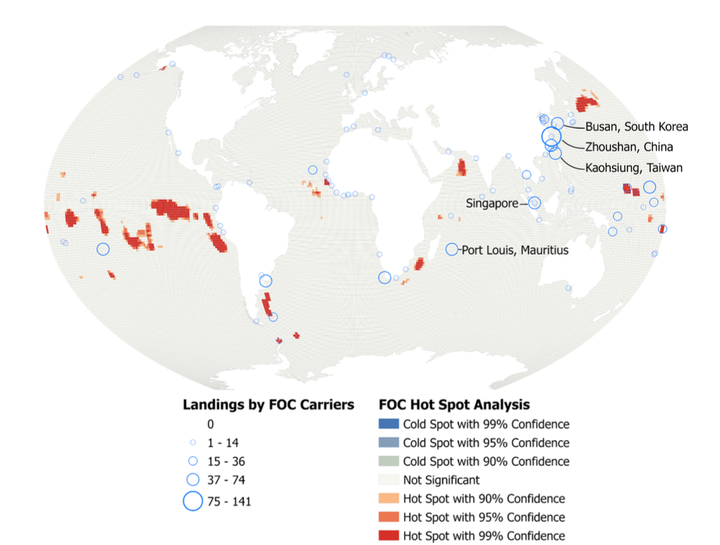
Abstract
Transshipment is one of the most common activities occurring between carriers and fishing vessels to exchange fish, as well as fuel, crew, and gear at sea or at port. While transshipment reduces the need for the fishing vessels to visit ports to offload their catches, thus increasing their efficiency, research has shown that this activity is also one of the major facilitators of IUU fishing. Research on transshipments is limited, and the few studies that are available on the subject focus on identifying hotspots of transshipment, and networks of actors involved. No study to date has examined the role ports play in facilitating transshipment activities, nor are there any studies that examine whether ports that are affiliated with China (the country with the highest IUU Fishing Index Score and 38% of the global share of distant-water fleets) are more likely to experience disproportionately higher volumes of FOC- flagged carrier vessel visits. Therefore, using the carrier vessel portal database from Global Fishing Watch, which contains information on the origin and destination ports of the carrier vessels involved in transshipment activities between 2015 and 2022, this research aims to (a) understand hot spots of FOC-flagged carrier vessel activity in the high seas and where such vessels offload their catches around the world; and (b) empirically test the characteristics of the ports (and the countries where these ports are located) used by these vessels to offload their catches. Findings suggest that ports that experience higher volumes of fishing vessel traffic, are in close proximity to high-seas transshipment activities involving FOC-flagged carriers, are designated ports of entry for foreign vessels, are Chinese-affiliated, as well as have low monitoring, control, and surveillance capacity are significantly more likely to be visited by FOC-flagged high-risk carrier vessels. This research proposes policy recommendations deriving from the findings of this research.